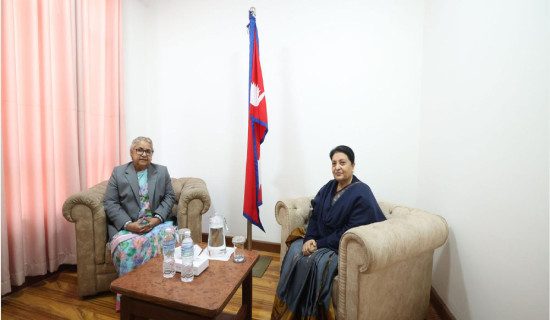- Sunday, 7 December 2025
Pilots Need Practice
Dixya Poudel
Last week, a Saurya Airlines plane carrying 19 passengers crashed while taking off the Tribhuvan International Airport, shocking the entire nation. While the captain survived, the rest perished, leading to one of the harrowing plane crashes that have occurred in Nepal. Similarly, when a plane crashed in Pokhara in 2023 killing all 72 people on board, it left an acrid mark on Nepali aviation sector. Now the old wounds have resurfaced calling for an overhaul in the sector that has been tainted by frequent plane accidents that have turned fatal. It is quite deplorable that they have led to questions about flight safety for both national and international flyers within the nation. Further, due to their safety concerns, Nepali planes are banned on European skies.
One of the adversities that Nepal’s aviation sector faces is the nation’s rugged and mountainous geography. Pilots in Nepal have to navigate hills and mountains as well as a weather that is prone to frequent changes. One cannot do anything about the geographical forces, but there could be ways to tackle it through rigorous pilot trainings. As such, pilot training is crucial since it equips the pilots and co-pilots to make effective decisions at critical times. Likewise, another factor that makes Nepali aviation so prone to crashes is the lack of investment when it comes to upgrading and maintaining aircrafts. Time and again, the causes of such crashes have been poor maintenance in aging planes that lack upgraded features.
The Civil Aviation Authority of Nepal (CAAN) is responsible for both airline regulation and airport management. However, there have been criticisms over this dual role that creates a conflict of interest, leading to mismanagement and corruption. And Nepal is often mired in corruption which has ruined the nation’s image in foreign investments and international support. It has spilled over to the aviation sector as well much to the chagrin of citizens. Instead of filling their own pockets, those involved in the aviation sectors should focus on strengthening policies and regulation. It could also help if the aviation sector focused in adhering to sturdier safety protocols.
The grieving families of the victims of airplane crashes not just lose their loved ones, they also carry a psychological impact of trauma. While they may be compensated and provided with psychological support, their heart will forever be scarred by their loss. Grief can loom forth in various phases such as sadness which could give way to anger. As a result, questions are harshly raged in the aftermath of a plane crash. Why did the accident occur? What is the government doing to ensure that planes don’t crash again? Is Nepali sky safe for travels?
Anger might be a negative emotion but at times it can be leverage for affirmative changes if aligned in the right direction. The anger of the mourning families and that of citizens has spilled over to social media with many decrying the lack of action on government’s part. The public’s ire has further been fueled by a lack of accountability. In any mode of transportation, the main priority has to be the safety and security of the passengers. Nepal’s aviation sector has to take lessons from its mishaps to ensure that history doesn’t repeat itself.
















